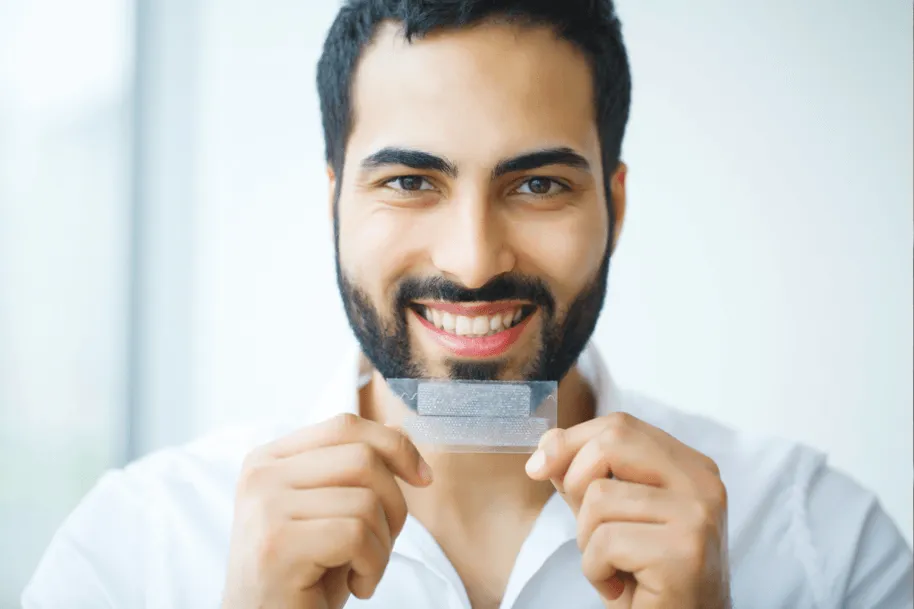Understanding Whitening Strips Expiration
Whitening strips are a popular and convenient method for achieving a brighter smile. These strips typically contain hydrogen peroxide or carbamide peroxide, which are the active ingredients responsible for breaking down stains on the enamel surface of your teeth. Like most cosmetic products, whitening strips come with an expiration date. This date indicates the period during which the product is expected to be effective and safe to use. Expiration dates are not arbitrary; they are determined through rigorous testing to ensure the stability and efficacy of the active ingredients. As the product ages, the potency of the active ingredients diminishes, and the risk of contamination increases, making the product less effective and potentially unsafe. It’s important to pay attention to the expiration date to ensure you are using the product as intended and avoiding any potential harm.
What Happens When Whitening Strips Expire
When whitening strips expire, the active ingredients, primarily hydrogen peroxide or carbamide peroxide, begin to break down. This degradation leads to a significant reduction in their effectiveness. The concentration of the whitening agents decreases, meaning the strips will be less capable of removing stains and brightening your teeth. You might notice that using expired strips yields little to no results, leading to wasted time and money. Furthermore, the adhesive on the strips can also degrade over time. This can affect how well the strips adhere to your teeth, potentially causing them to slip or not make full contact with the tooth surface. This can also diminish the effectiveness of the product. In addition to the active ingredients degrading, the overall integrity of the product might be compromised. The packaging may no longer provide an adequate barrier against moisture and air, potentially affecting the quality and safety of the strips.
Risk of Using Expired Whitening Strips

Using expired whitening strips carries several potential risks. One of the primary concerns is a reduced efficacy, meaning the strips might not whiten your teeth as intended. The active ingredients lose their potency, making the treatment less effective. Another significant risk is potential irritation. Expired products might contain degraded chemicals that can irritate your gums or teeth. This can manifest as increased sensitivity, redness, or even discomfort. Expired products might also be more susceptible to bacterial growth, which can lead to infections or other oral health issues. Though rare, the breakdown of the active ingredients could result in unpredictable chemical reactions that might be harmful. Moreover, the adhesive on the strips could become less stable over time, leading to difficulties in application and potentially causing the strips to detach prematurely. Always check the expiration date and avoid using products past their recommended usage period to minimize these risks and maintain your oral health.
Can Expired Whitening Strips Still Whiten
While it’s technically possible that expired whitening strips might still offer some whitening effect, the extent of that effect will be significantly reduced. The primary active ingredients responsible for teeth whitening, such as hydrogen peroxide or carbamide peroxide, degrade over time. This degradation process diminishes their effectiveness in breaking down stains on the enamel. The older the strips, the less potent these ingredients become, leading to a weaker whitening action. You might observe minimal to no noticeable difference in tooth brightness, rendering the treatment ineffective. Moreover, even if some whitening effect is observed, it is unlikely to match the results you would achieve with fresh, unexpired strips. Therefore, relying on expired strips is not recommended if you are aiming for significant and reliable teeth whitening results. For optimal outcomes, always use products within their expiration dates to ensure the highest possible efficacy.
How to Properly Store Whitening Strips
Proper storage of whitening strips is crucial for maintaining their efficacy and extending their shelf life. The primary goal is to protect the strips from factors that can degrade the active ingredients. The most important factor is to store whitening strips in a cool, dry place. High temperatures and humidity can accelerate the breakdown of the chemicals in the strips, reducing their potency. Avoid storing them in bathrooms, where humidity levels can be high due to showers and baths. The original packaging plays a vital role in preserving the product. Keep the strips sealed tightly in their original packaging to protect them from air and moisture. Ensure the packaging is properly closed after each use. Exposure to air can cause the active ingredients to degrade over time. Avoid direct sunlight, as UV rays can also degrade the active ingredients, rendering the strips less effective. Consider storing your whitening strips in a drawer or cabinet away from direct sunlight. By following these storage recommendations, you can help ensure that your whitening strips remain effective for as long as possible.
When to Dispose of Expired Whitening Strips

Knowing when to dispose of expired whitening strips is essential for maintaining both your oral health and the effectiveness of your teeth whitening efforts. The most obvious time to discard the product is when it has reached its expiration date, which is usually printed on the packaging. Using expired strips means the active ingredients are less potent, and the product is less likely to deliver the desired results. Look for any signs of degradation, such as discoloration or changes in the texture of the strips or the adhesive. These changes can indicate that the product is no longer safe or effective. If you notice any unusual odors or if the packaging is damaged or compromised, it’s best to dispose of the strips immediately. When disposing of expired whitening strips, ensure they are out of reach of children and pets. While expired strips are not likely to cause serious harm, they can still pose a risk if ingested or misused. For environmental reasons, consider disposing of the packaging responsibly. Check local guidelines for proper disposal of cosmetic products to minimize the environmental impact.
